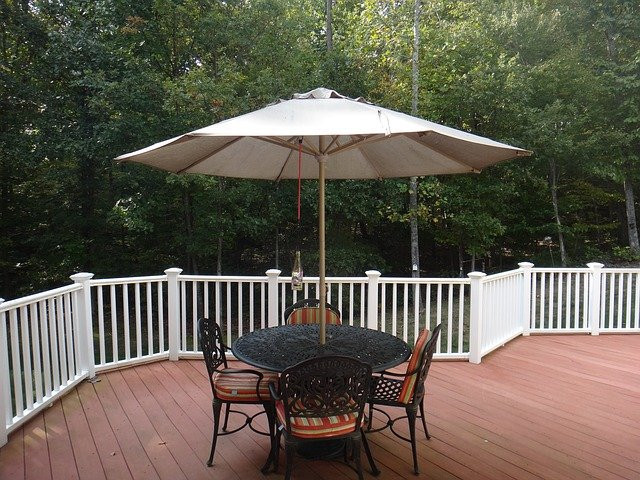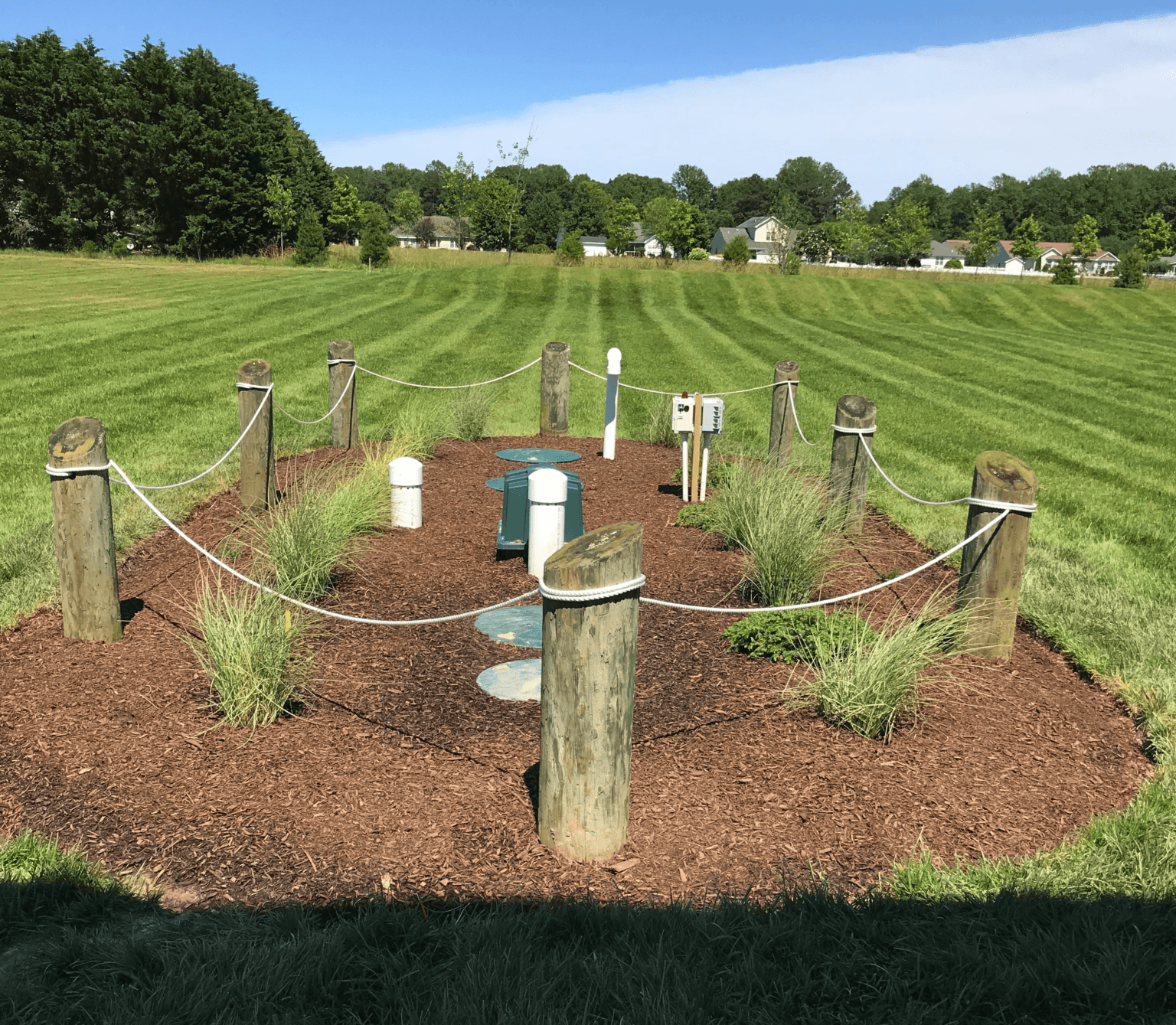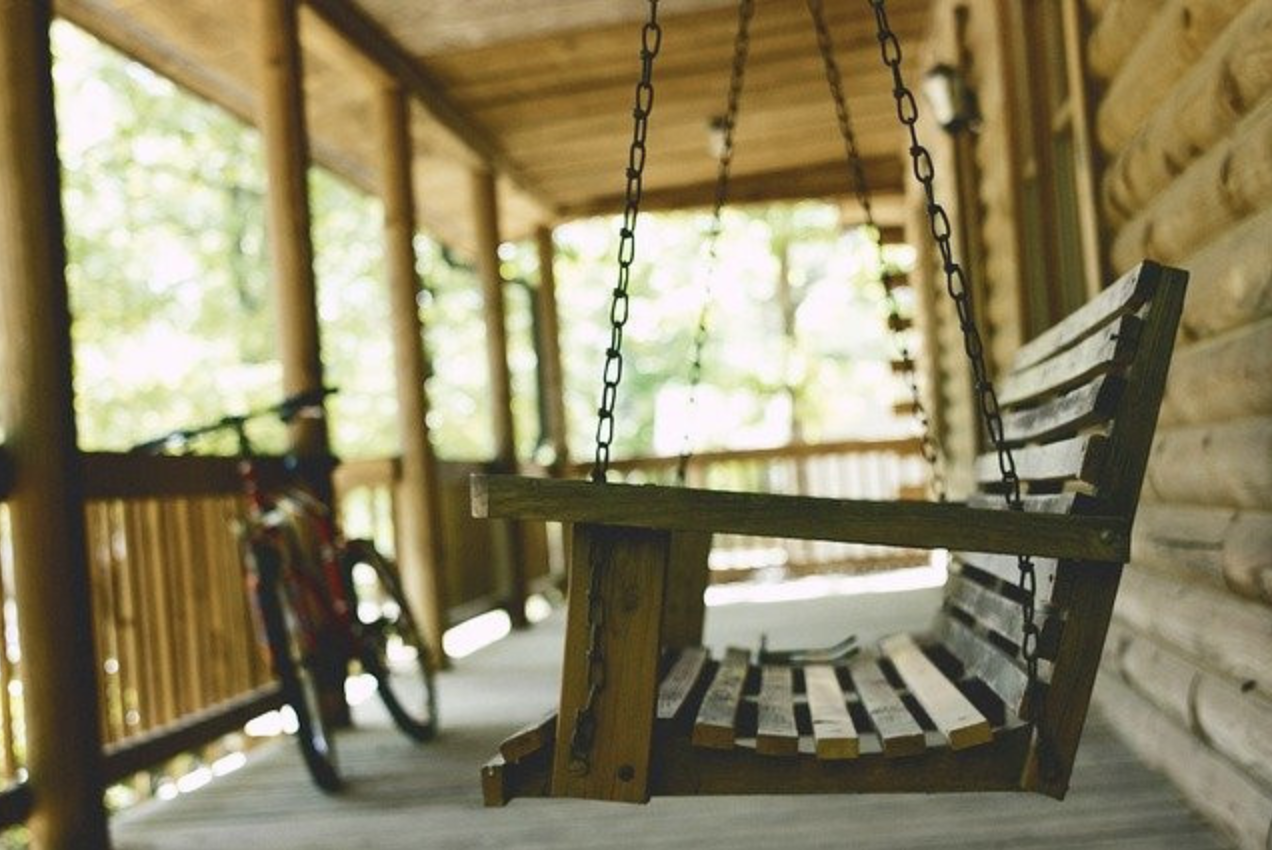If you are wondering whether your porch can support a swing, you are in the right place. Upgrading your porch with a swing is an excellent idea, but before installing it, you should familiarize yourself with some essential structural elements and other requirements.
Most porches can support a swing. However, some of them need reinforcements. When choosing a swing, its size should be compatible with the porch size. Make sure you inspect the load-bearing joists before any installation. Consulting with experts can be helpful before making any decisions.
After we built our new house in Lewes, Delaware, this was my first question when my wife got all excited about it. I loved the idea, but I was concerned about its safety and overall feasibility.
I have researched the topic and talked to a couple of contractors about it. In the following paragraphs, you will find all the information I have learned about swing installation and additional work. I will also show you the before and after of our porch swing.
Structural Support

There is something magical about a porch swing. But you may ruin the magic if you attach your swing onto a weak structure. Joists are the only structural elements that can safely hold a fully-loaded swing. Joists have to be strong enough to hold at least 500 pounds. Classic two-person swing requires one of the following:
- single 2×8 joist
- two 2×6 joists
- three 2×4 joists
The majority of porches have horizontal joists for ceiling support. If your porch ceiling is finished, it will be hard to determine joist depth. In that case, panel removal is necessary.
Some porches do not have joists big enough to supports swings. Luckily, there is a solution to that problem. Before hanging a swing, 4x4s should be installed for support. Those additional beams have to be long enough to span across at least three joints, perpendicular to them.
It is important to mention that you should consider your weight together with a swing weight before you determine your swing structure’s strength. Some models of swings can be quite heavy, so it will be safer to reinforce the structure if it seems like it could barely hold the weight.
There is one more important point to consider. Some porches have strong enough joists to support a swing, but they are located in the wrong place (e.g., too close to the wall). In that case, you can install supporting beams across joists to be able to hang your swing in the desired location.
===> Do you know what a blue porch light means?
Swing Location

After carefully inspecting joists, you should choose the right location. You need to have at least 48 inches of space behind the swing. And you should have at least 50 inches in front of the swing to sit in comfortably.
You also need to have 16 inches of space on both sides. Hooks holding a swing have to be about 4 inches wider than the length of the swing.
Installing a swing according to these specifications ensures equal weight distribution and prevents ropes or chains stroking the swing. Clearance behind and on both sides prevents knocking into walls or fences.
Most standard two-person swings are between four and five feet long. Depth ranges from 18 to 36 inches. Choose a location where the swing won’t obstruct access to the porch or the house entrance.
The seat itself should be positioned between 17 and 19 inches from the floor. Based on this and the ceiling’s height, you should calculate the length of ropes or chains holding the swing. Sometimes ropes and chains are sold together with swings, but some people prefer to buy them separately to get the style they are looking for.
Larger swing models are also available on the market, and those can accommodate up to 6 people. If installing one of those, make sure your porch joists can handle the weight and that the size of the porch allows the installation of such a massive swing. If you are trying to do this, I recommend consulting an expert.
Hardware and Supporting Equipment
Using proper equipment ensures the stability and safety of your swing. First of all, every piece of additional equipment like screws or hooks have to be made for outdoor use. They will be exposed to elements, and you don’t want them to rust and break. The load rating should be at least 500 pounds, preferably more.
To connect the swing with hooks installed on the joists, you can use either ropes or chains. Steel chains last longer, so if you want high durability, go with that option.
If you prefer ropes, make sure they are at least 3/4 inch in diameter, made of nylon or polyester. You can find them in marine stores selling boat ropes. They are available in numerous colors and designs, suitable for everyone’s taste.
Hanging-kit usually contains swivel hanger mounts and springs that enable smooth swinging. For hanger mounts installation, you should use lag screws.
Another option is to use heavy-duty stainless steel screw hooks on which you can attach ropes or chains. Make sure hooks are enclosed for safety reasons. Screws should be 1/2 inches thick and have at least 4 inches long shanks.
Overall Installation Guidance
Before anything else, read the swing manufacturer’s instructions. Most porch swings come with a booklet containing all the necessary installation information and precaution measures.
When installing ropes/chains, you can use two or four hooks attached to the ceiling. The more hooks you use, the more stability, but also more work and less swinging ability.
If using two hooks, attach chains/ropes to four corners at designated places and connect two chains/ropes into reversed V shape high above the swing.
Quick-links for attaching chains are usually sold with swings. If that is not the case, you can find them in a local hardware store. Make sure they can bear the load.
Installation Steps for Chains
- Attach shorter chains to the rear end of a swing and longer ones to the front end
- Connect both chains about 3 feet above the swing using S hooks or similar
- Take the longer chain and attach it to the ceiling. That will tilt the swing backward and provide greater comfort.
- Tilt and height can be adjusted by hooking different chain links
Installation Steps for Ropes
- Make sure your rope length is sufficient – always have a few extra feet
- Tie a loop in the middle of the rope using a basic knot
- Attach a rope through the hole on the ceiling hook
- Pull one end of the rope through the front attaching point on your swing and the other end through the back attaching point
- Do the same with the other side of the swing
- Tie large knots underneath that can’t slip through attaching holes
Additional Tips and Tricks
- When tying ropes, position your swing onto boxes or bricks in a straight and floor parallel position. That will enable precise installation.
- Precise positioning requires at least two people; so make sure you have someone to help you
- If you are not handy with tools or improvisation, choose a swing with all the necessary installation parts included
How to Hang a Porch Swing through Vinyl
Our porch has vinyl, so I wanted to know what additional steps you need to take when you want to hand a porch swing through vinyl. In this video, general contractor Tom Silva adds structure to a porch in order to safely hang a swing through vinyl.
Before and After of our Porch Swing
I don’t have the skillset for this project, and we don’t have a big porch, so it may be tricky to install a swing on our porch. I have asked the same contractor that will build our deck to help us with that.
Update: I think they did a great job. These are the before and after pictures of our front porch. My wife and I have sat on the swing already and it feels very strong. So, I have no doubts that my porch can support a swing. 🙂
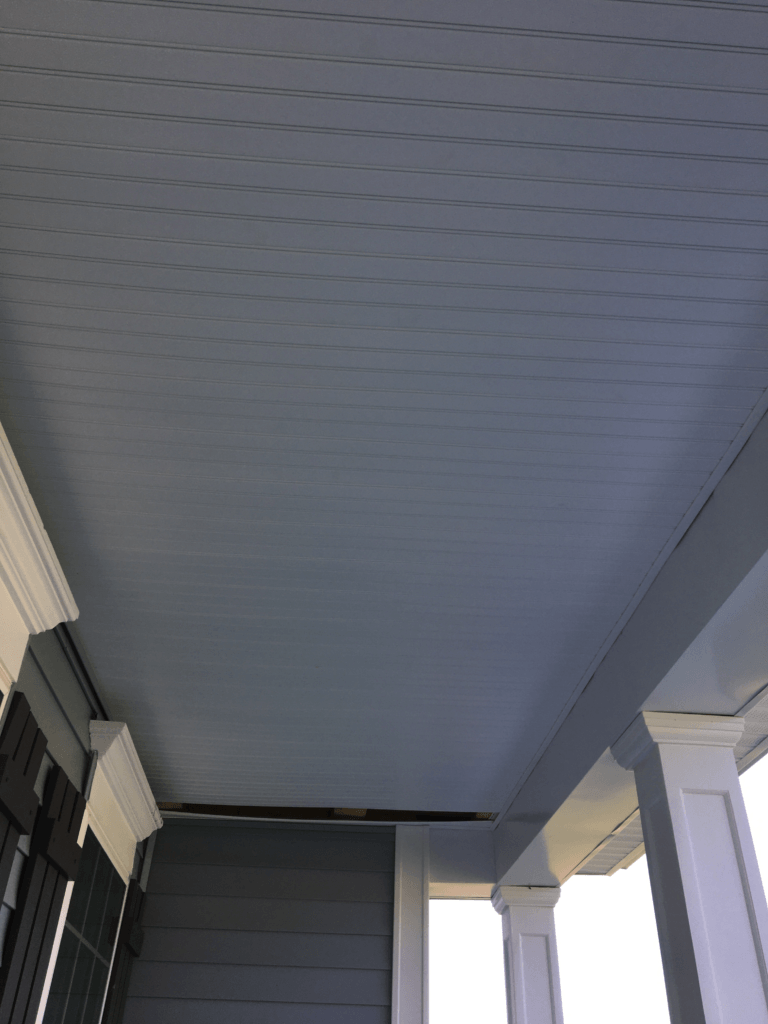
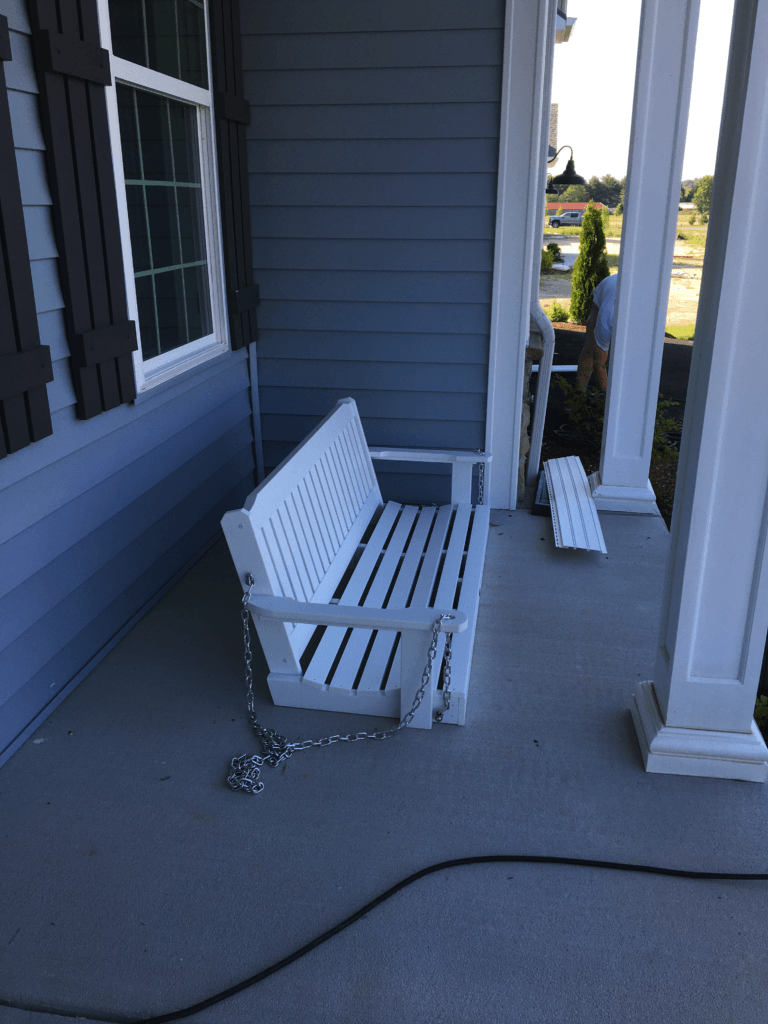
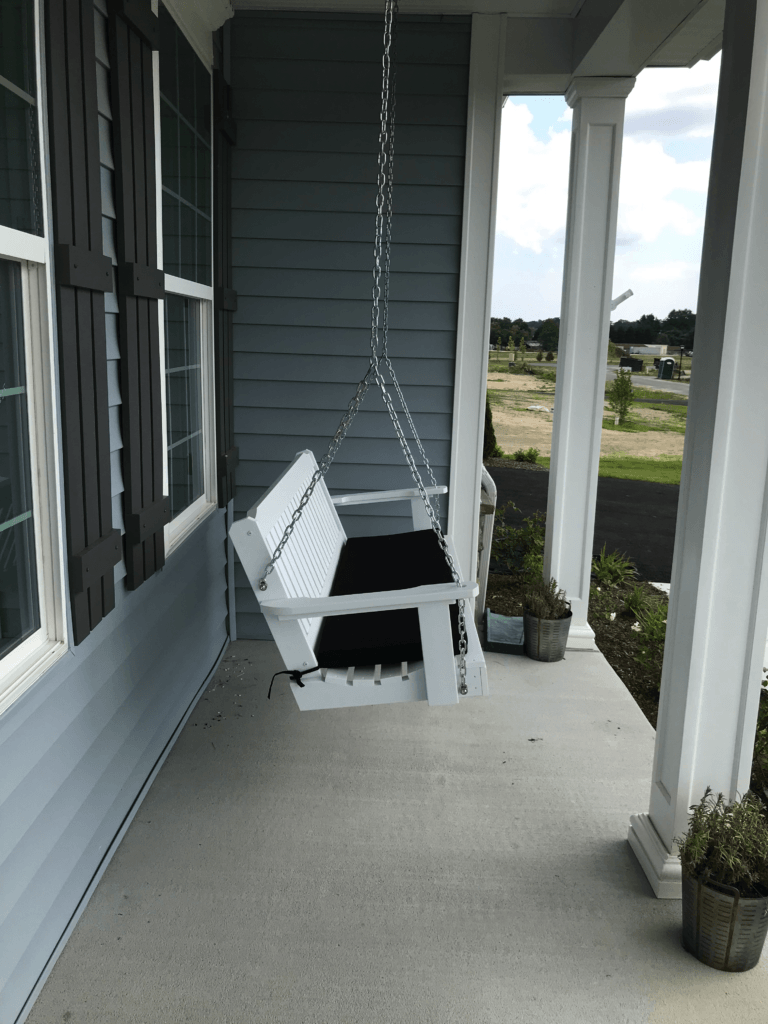
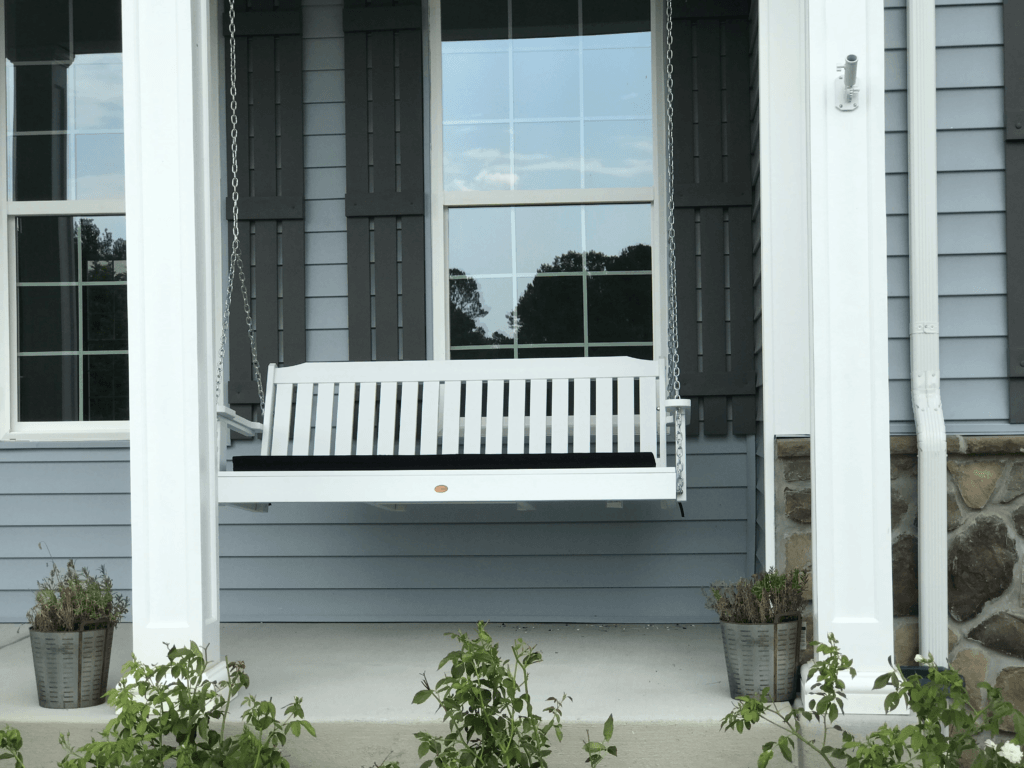
Final Thoughts
Porch swings are a beautiful feature. Gently swinging and relaxing after a hard day makes them very appealing to many homeowners. Before installing one of those great pieces of outdoor furniture, make sure you take all the necessary steps and enjoy your safely installed swing.
Related Posts:
